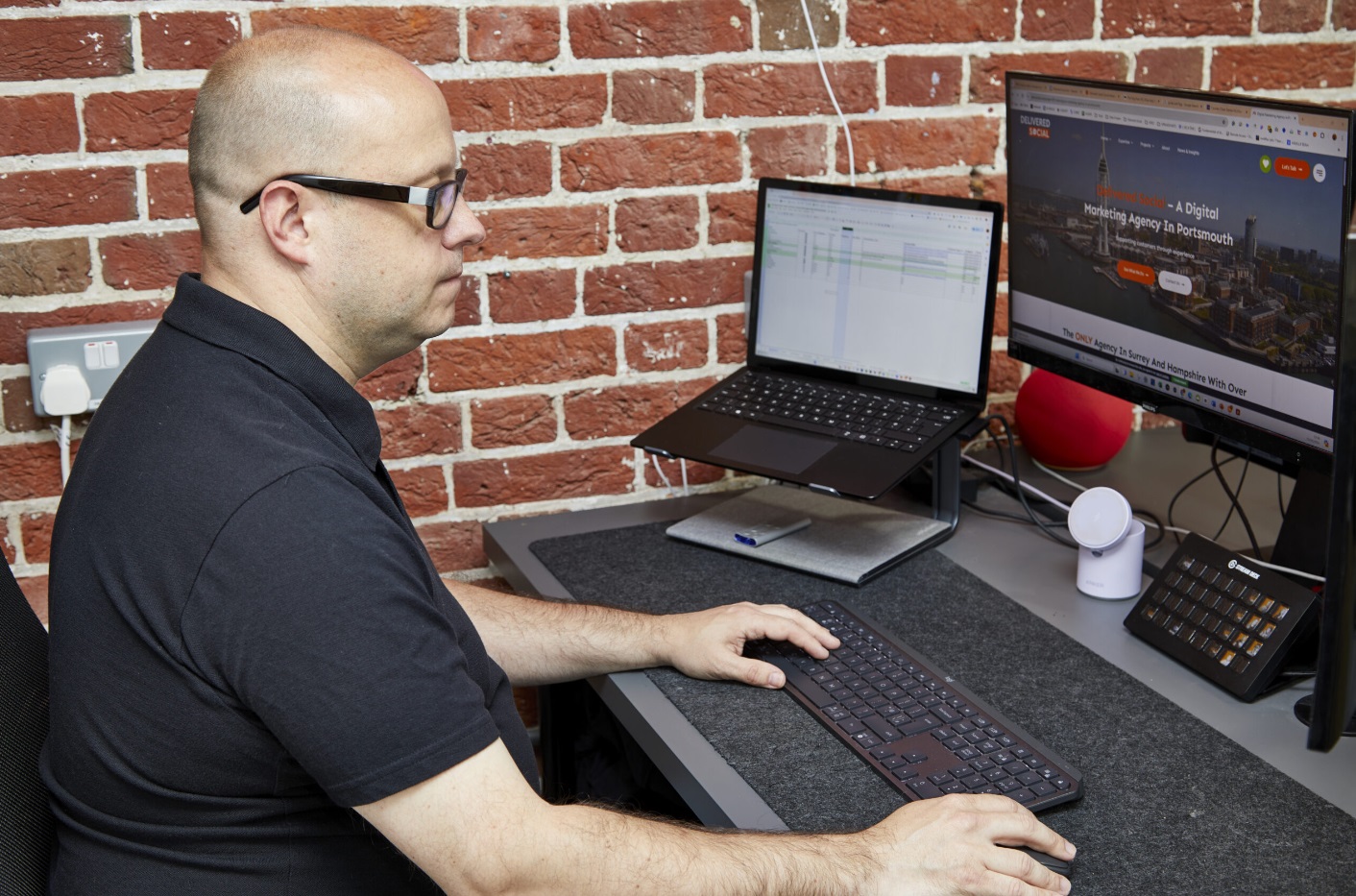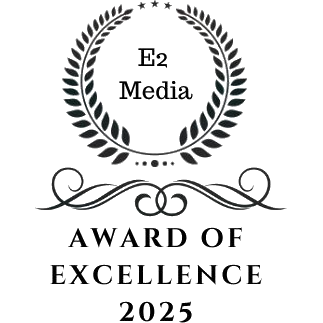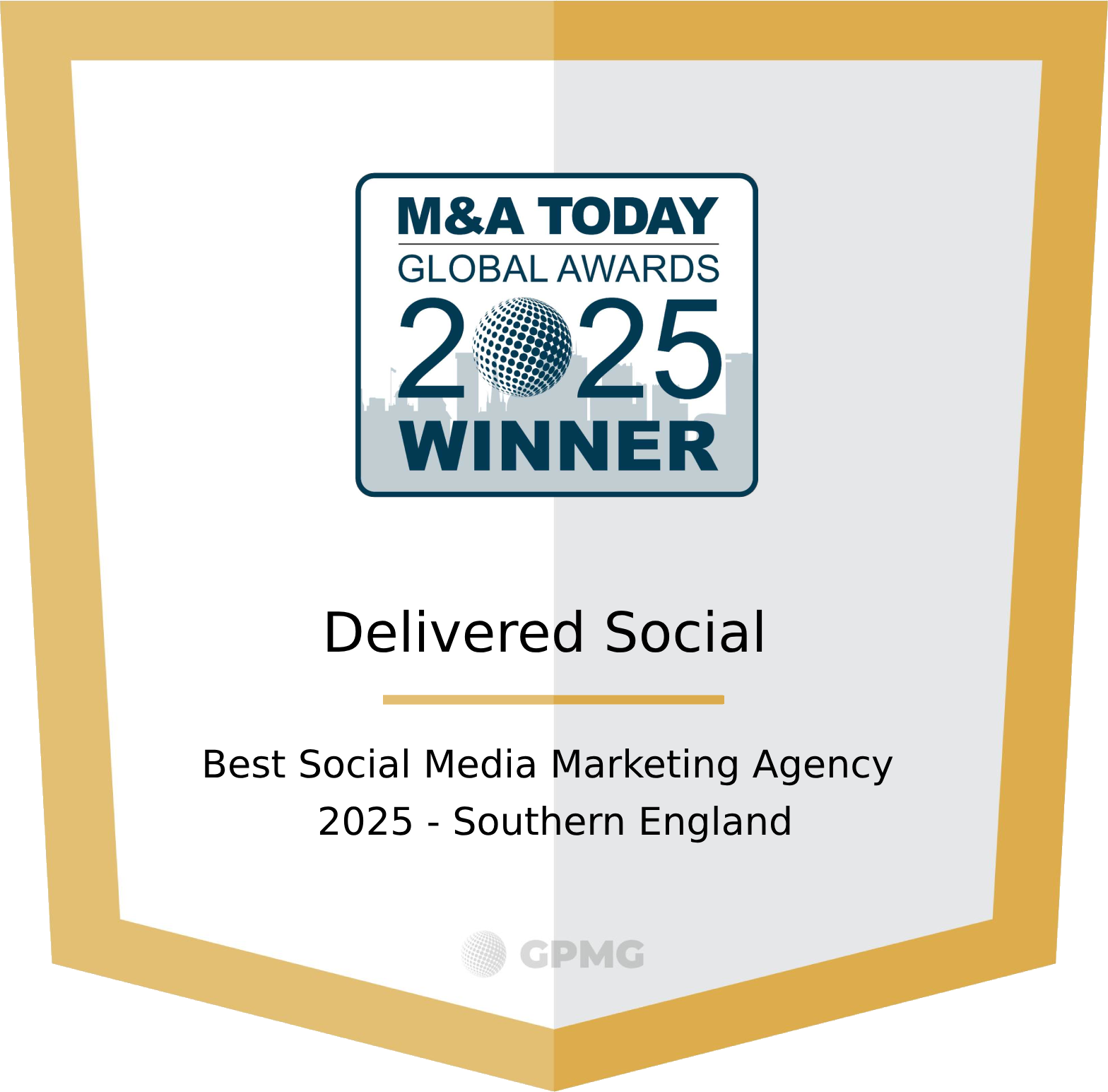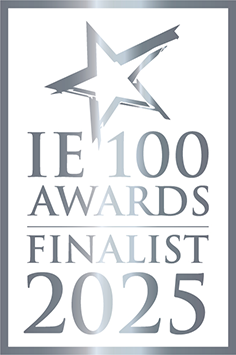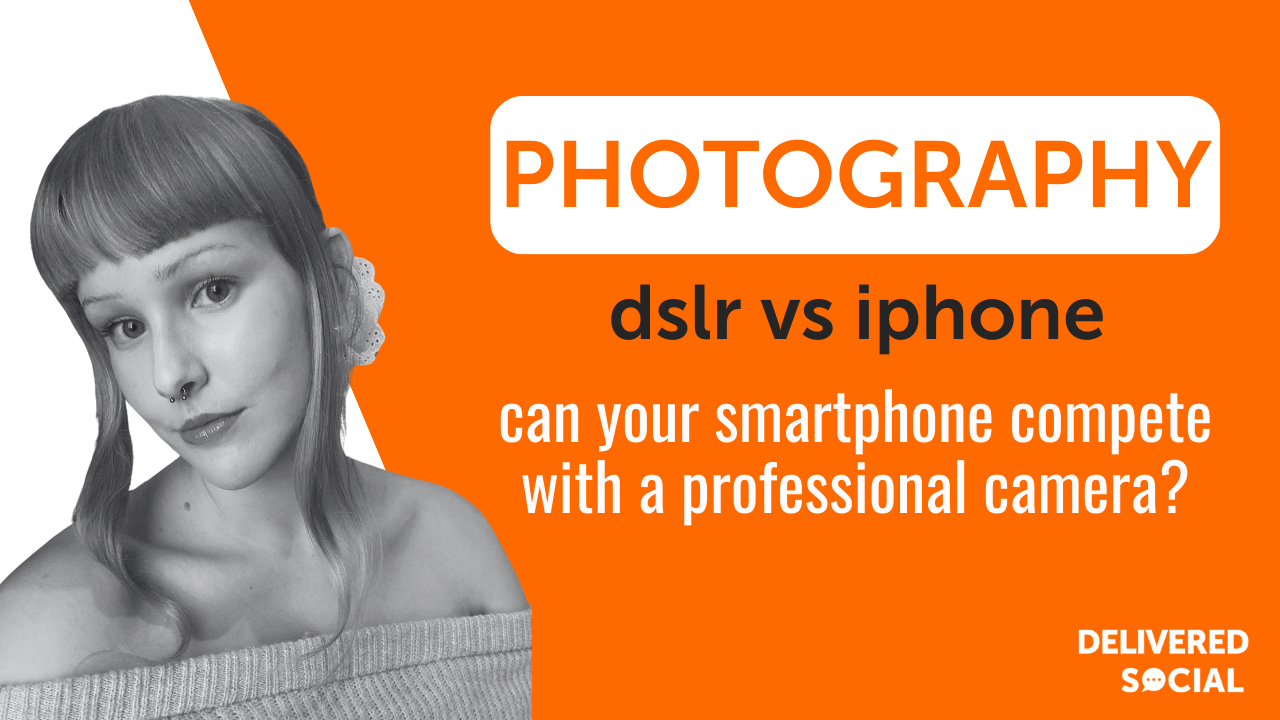
DSLR vs iPhone: Can Your Smartphone Compete with a Professional Camera?
The battle between DSLR and iPhone has been heating up for years. With each new iPhone release, Apple promises even better camera technology, blurring the lines between professional and smartphone photography. But can an phone really compete with a DSLR when it comes to image quality, versatility, and professional use?
For businesses, content creators, and brands, photographs play a crucial role in social media marketing, website design, and branded photoshoots. The ease of capturing and instantly uploading content with a phone has made smartphone photographs more appealing than ever. But professional photographers still swear by DSLR cameras for their superior sensor size, lens flexibility, and manual controls.
In this guide, we’ll break down the key differences between DSLRs and iPhones, covering image quality, usability, and which one suits your photograph needs best.
Image Quality: How Do DSLRs and iPhones Compare?
When it comes to image quality, both commercial cameras and smartphones have their strengths, but they work differently. While phones rely on computational photographs, commercial cameras use larger sensors and high-quality lenses to capture images with more detail and depth. Let’s break down the key differences.
Megapixels vs. Sensor Size: What Really Matters?
Many people assume that higher megapixels mean better photos, but sensor size is actually more important.
- DSLRs have much larger sensors, meaning they capture more light and detail, resulting in sharper, more dynamic images.
- iPhones use AI-powered image processing to enhance details, making photos look professional even with a smaller sensor.
Low Light Performance: Which One Wins?
Low-light photography is where commercial cameras shine. Their larger sensors and ability to swap lenses give them an edge when shooting in dark environments.
- DSLRs perform better in low light without needing artificial enhancements.
- iPhones rely on Night Mode and software adjustments to brighten dark photos, often smoothing out details in the process.
Dynamic Range & Colour Accuracy
- DSLRs capture more dynamic range, meaning they preserve better details in bright and dark areas.
- iPhones use Smart HDR to balance exposures but may not achieve the same depth of colour as a commercial camera
Portrait Mode & Background Blur: Computational vs Optical
- Commercial cameras use lenses for true background blur (bokeh), creating a natural, artistic depth-of-field effect.
- iPhones use Portrait Mode, which mimics this effect with software. While impressive, it can sometimes create artificial-looking edges.
Learn why commercial photography for websites is essential for brand credibility, engagement, and conversions in our blog here.
Which Camera Is More Practical?
While image quality is a major factor, usability plays an equally important role, especially for businesses and content creators who need to produce content quickly and efficiently. When it comes to DSLR vs iPhone, which one offers the best balance of ease of use, convenience, and practicality?
Ease of Use: iPhone’s AI vs. DSLR’s Manual Control
- Smarthones are designed for instant, effortless photographs. With built-in AI enhancements, Smart HDR, and automatic exposure adjustments, you can point and shoot without needing technical skills.
- commercial camera require manual settings for optimal results. Shutter speed, aperture, and ISO need adjusting based on lighting conditions, which offers greater control but requires knowledge and time.
Portability & Convenience: Which One Wins?
- Smartphones are pocket-sized and always with you, making them perfect for on-the-go photography, travel, and spontaneous online content.
- Commercial cameras are bulkier and require extra equipment (lenses, tripods, memory cards), making them less convenient for quick shots but better for planned photoshoots.
Shooting Modes & Features: More Options vs. AI Assistance
- Commerical cameras allow lens swapping, giving you flexibility for macro, telephoto, and wide-angle shots. They also offer advanced burst modes, long exposure options, and RAW image capture.
- iPhones rely on AI-driven features like Portrait Mode, Night Mode, and Live Photos to enhance images. While these tools make photographs easier, they lack the depth of control commercial cameras offer.
Social Media Photography: Which One Works Best?
For businesses, brands, and content creators, photography is all about speed, quality, and engagement. But when it comes to DSLR vs iPhone, which one is better suited for platforms like Instagram, Facebook, and LinkedIn?
Instant Sharing: The iPhone Advantage
One of the biggest perks of using a phone for social media photographs is its seamless integration with social platforms:
- Instant uploads to Instagram, TikTok, and Facebook without needing file transfers.
- Built-in editing tools allow quick adjustments before posting.
- Live Photos & Boomerangs offer unique content styles that commercial cameras can’t replicate in-camera.
Editing & Filters: iPhone vs DSLR Processing
- Smartphones come with built-in filters and AI enhancements, making photos instantly “social media ready.” Apps like Lightroom Mobile and VSCO make further editing quick and easy.
- DSLRs provide RAW files for professional editing, which results in higher-quality images but takes more time and skill.
Engagement & Aesthetic: What Performs Better?
- Bright, sharp, and vibrant images tend to perform best online. Smartphones excel at producing these types of shots without much effort.
- Commercial camera images can look more polished and professional, which works well for branded photo sessions and high-end campaigns.
Looking to grow your photography business online? Check out the best social media marketing strategies for photographers.
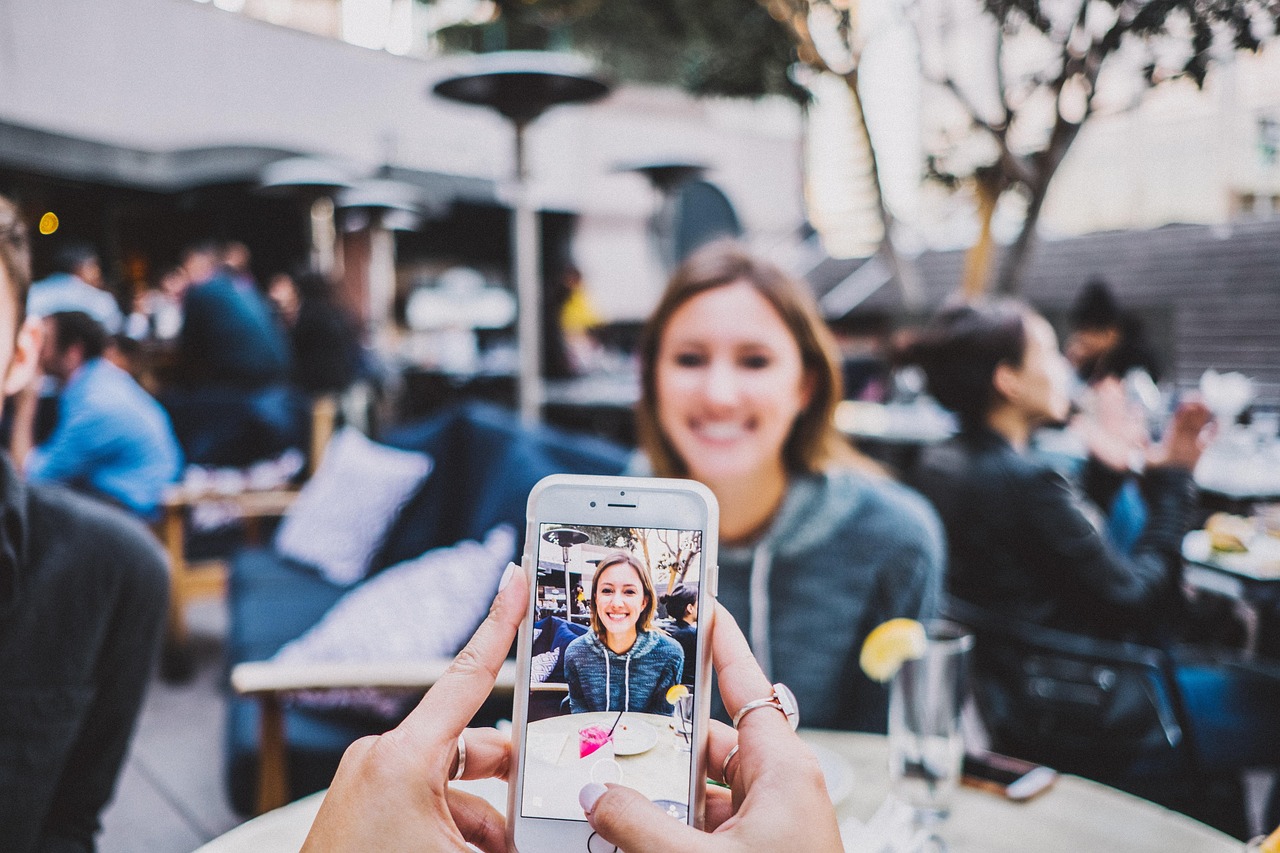
Website Photography & Branded Photoshoots: What’s the Better Choice?
When it comes to website photographs and branded photo sessions, the stakes are higher. Businesses need high-quality visuals that reflect their brand’s professionalism and credibility. But is a phone good enough, or is a DSLR necessary?
Business Photography Needs: What Works Best?
- Product Photographs: Commercial cameras offer sharper details, better lighting control, and high-resolution images, making them ideal for product listings and eCommerce sites.
- Team Headshots & Office Photos: A phone can work well for casual team shots, but for corporate portraits, a DSLR with a professional lens produces better results.
- Event Photographs: commercial cameras are better suited for live events due to superior low-light performance and interchangeable lenses.
Professionalism vs Accessibility: When to Use Each
- iPhones provide quick, high-quality visuals, perfect for updating online profiles, blog images, or smaller site sections.
- DSLRs create highly polished, professional images, ideal for banners, product pages, and branding materials.
Client Perception & Branding: Do Quality Differences Matter?
A high-end brand requires a high-end visual presence. While smartphones can take great photos, businesses that rely on premium branding, such as luxury goods, real estate, or corporate firms, benefit from the higher resolution and sharper details of a commercial camera.
Want to make your brand stand out? Discover the 8 key benefits of a strong brand identity.
Verdict: Which One Should You Choose?
When it comes to DSLR vs iPhone, the best choice depends on your needs and goals.
- If you’re a business, brand, or influencer looking for quick, high-quality social media photography, the phone is an easy, accessible, and powerful tool.
- If you need branded photoshoots, product photographs, or site visuals that require the highest level of detail and professionalism, a commercial camera is still the best investment.
- For content creators and small businesses, iPhones are closing the gap, offering convenience, built-in AI enhancements, and instant sharing capabilities.
- However, commercial cameras remain unbeaten for ultimate image quality, lens variety, and creative control, making them the go-to choice for professional photographers.
Ultimately, both have their place in modern content creation. If you’re creating everyday website photographs or online content, a phone will do just fine. If you need high-end visuals with absolute control, stick with a DSLR.
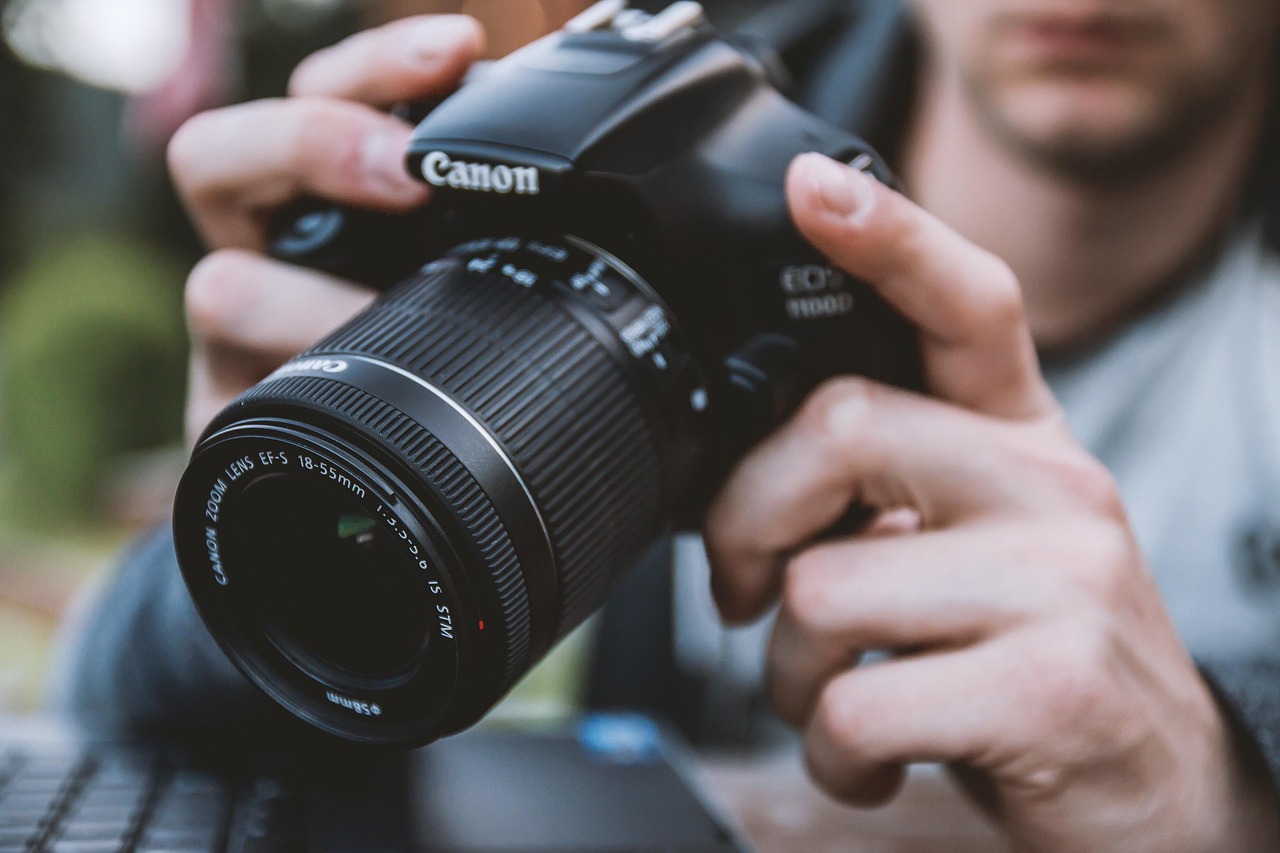
Frequently Asked Questions (FAQ’s)
1. Can a phone replace a DSLR for professional photographs?
For casual and social plat photography, yes. However, for high-resolution branding, product shots, and full creative control, a DSLR is still superior.
2. Which is better for social media photography?
A phone is the better choice due to its convenience, built-in editing tools, and instant sharing features.
3. Can a phone take professional-looking photos?
Yes! With good lighting, proper framing, and slight editing, iPhone photos can look just as professional as DSLR images in many scenarios.
4. Should businesses invest in a DSLR?
If high-end branding and website photographs are key to your business, a commercial cameras is worth the investment. Otherwise, a phone can meet most digital content needs.
Interested In Working Together?
Introducing Delivered Social. We’re The Most-Rated Digital Agency In Surrey & Hampshire – We’ve Got To Be Doing Something Right.
Delivered Social is a digital marketing agency with one mission—to help businesses grow. We’re famous in Guildford and Portsmouth for our social clinics. We believe in free advice. We build lasting relationships because our team prides itself on being helpful, which our clients appreciate.
If you are looking for a new website or an agency to manage your social media presence, we can help.
If you need something slightly different, here's a super handy list of all our services, or you can always email us.


